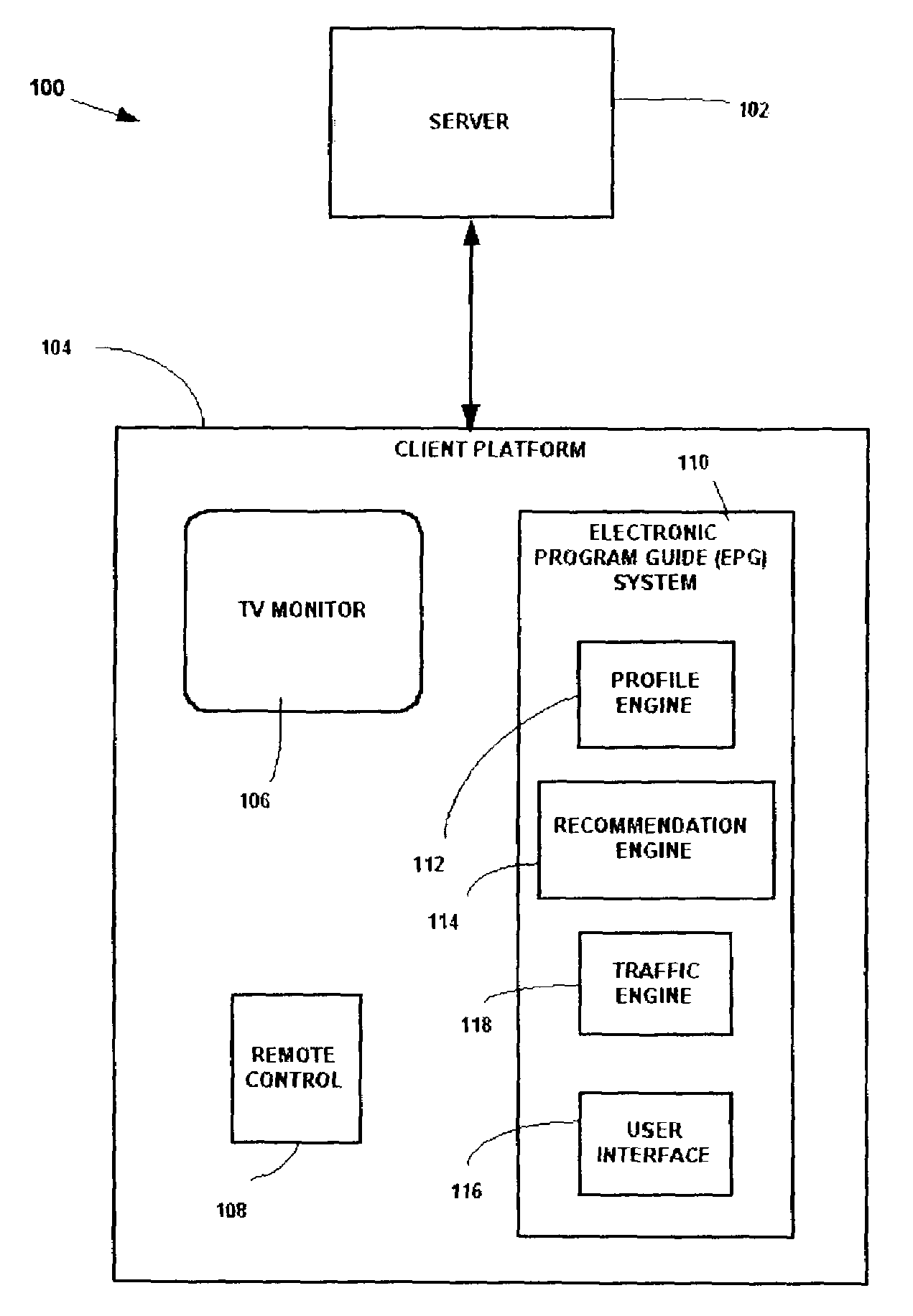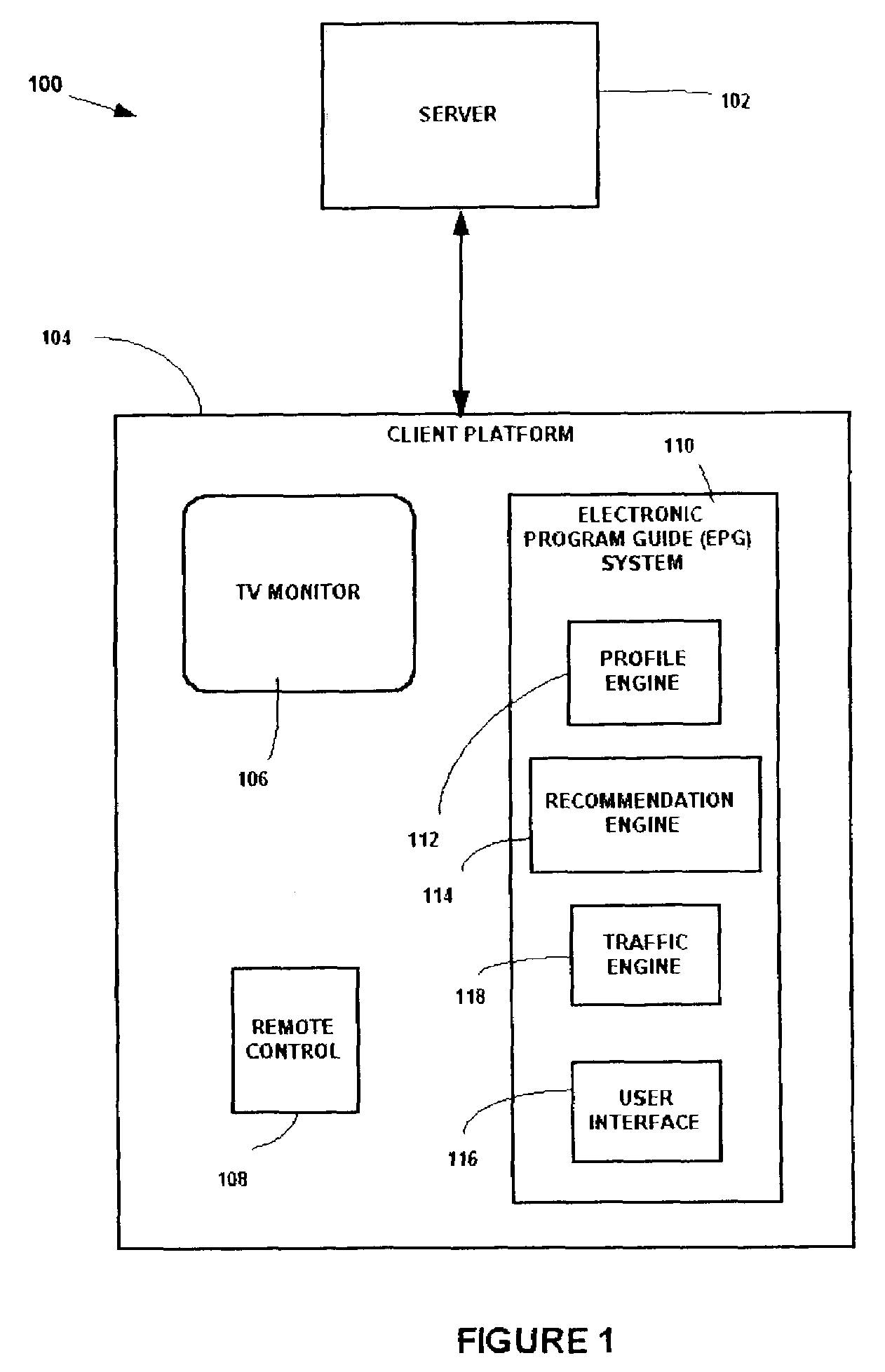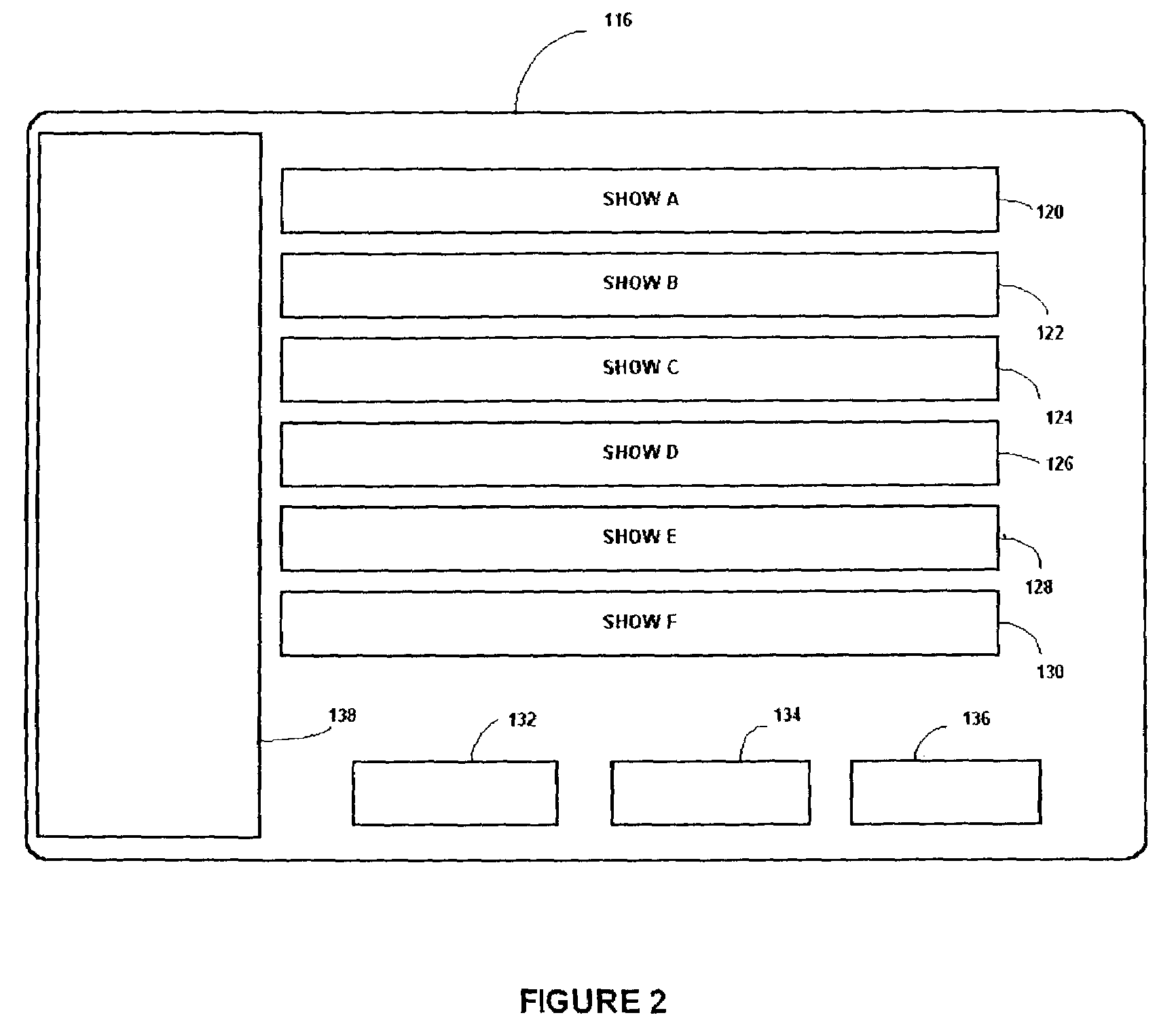Recommendation-based electronic program guides with user-imperceptible preferences
- Summary
- Abstract
- Description
- Claims
- Application Information
AI Technical Summary
Benefits of technology
Problems solved by technology
Method used
Image
Examples
Embodiment Construction
[0038]FIG. 1 illustrates a content delivery system 100 as in the present invention. The content delivery system 100 includes a server 102 for providing program content to a client platform 104. The client platform 104 includes a television monitor 106 for viewing program content, a remote control unit 108 for selecting and controlling program content, and an electronic program guide (EPG) system 110. Within the EPG system 110, according to the present invention, there is shown a profile engine 112, a recommendation engine 114, and a user interface (UI) 116, which may include multiple layered screens. The EPG system 110 also includes a traffic engine 1118, which will be described further on.
[0039]The recommendation engine 114 is a software module that rates each television show or other content available for viewing, using known methods described in the U.S. and foreign patent documents incorporated herein by reference. In particular, the recommendation engine 114 may use profile inf...
PUM
 Login to View More
Login to View More Abstract
Description
Claims
Application Information
 Login to View More
Login to View More - R&D
- Intellectual Property
- Life Sciences
- Materials
- Tech Scout
- Unparalleled Data Quality
- Higher Quality Content
- 60% Fewer Hallucinations
Browse by: Latest US Patents, China's latest patents, Technical Efficacy Thesaurus, Application Domain, Technology Topic, Popular Technical Reports.
© 2025 PatSnap. All rights reserved.Legal|Privacy policy|Modern Slavery Act Transparency Statement|Sitemap|About US| Contact US: help@patsnap.com



